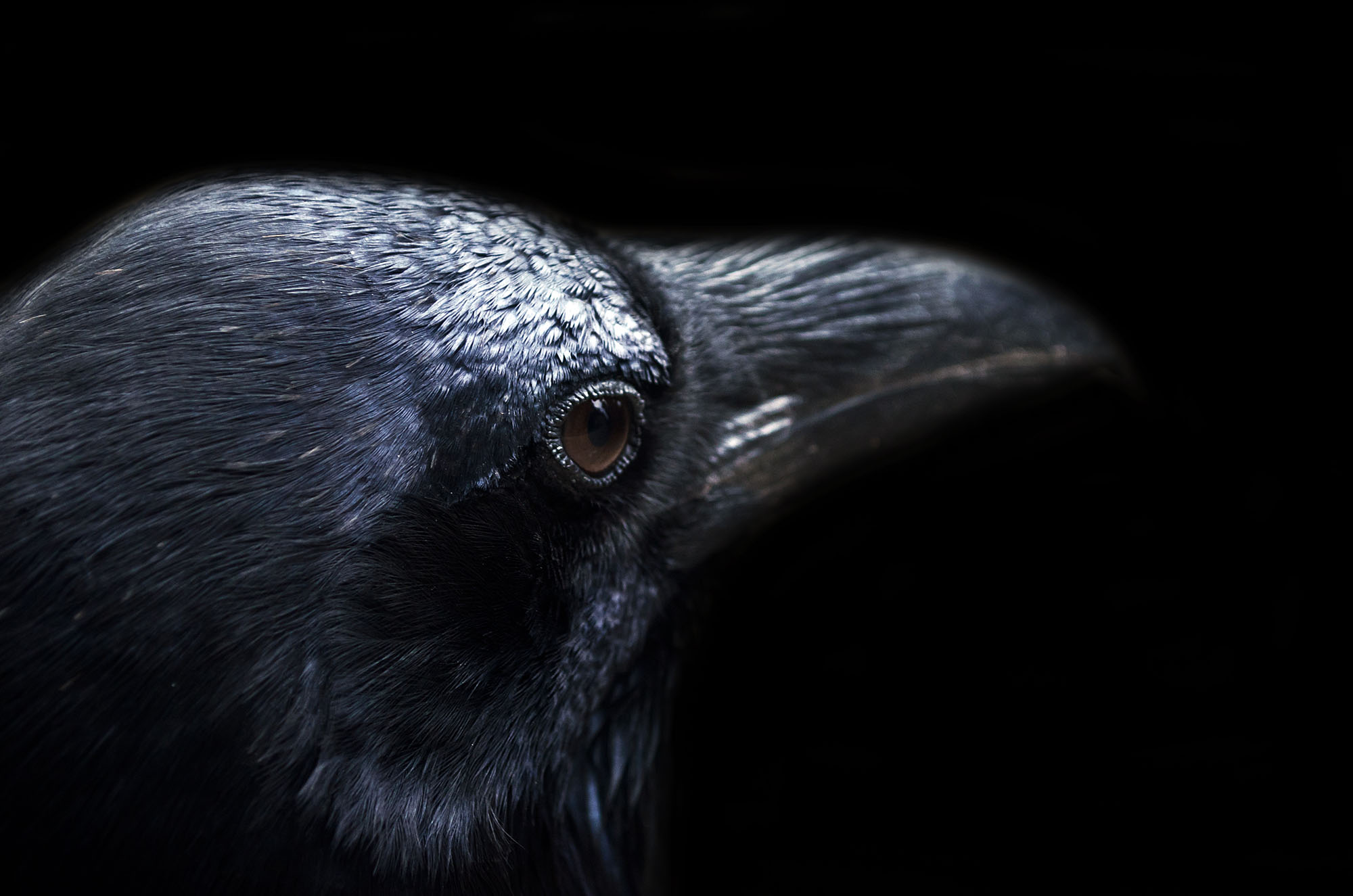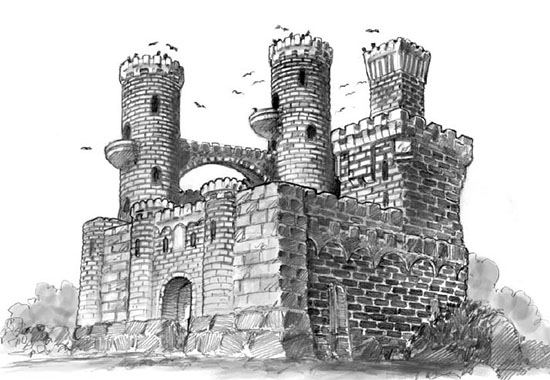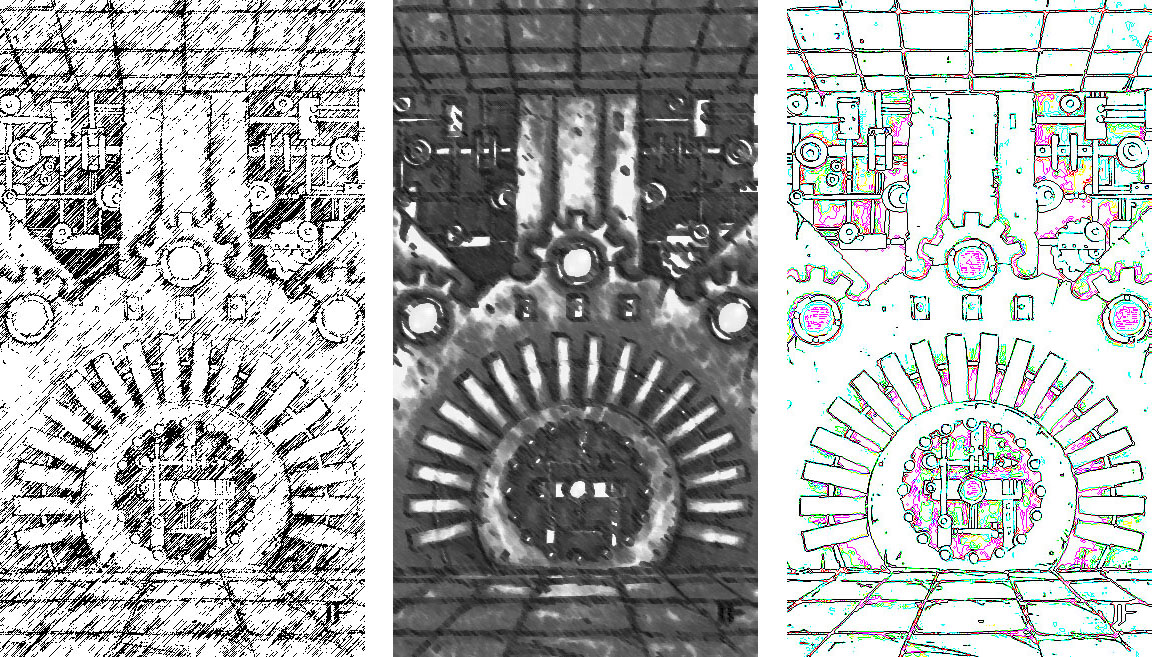
SESSION 35B: LETTERS OF MYSTERIOUS MOTIVE
January 5th, 2009
The 18th Day of Kadal in the 790th Year of the Seyrunian Dynasty
Tellith thanked them again for their help. While she was expressing her gratitude, she remembered that letters had come for “Master Ranthir and Master Tor, now where did they go? Ah! Here they are!”
They thanked Tellith for both her kindness and the letters and then headed upstairs to Elestra’s room.
Elestra wanted to question the raven… only ravens don’t actually talk, so that proved to be a bit of a problem.
Elestra, however, had an idea. “We could kill it and then use speak with dead—“
“I don’t think it works like that.”
By the time Tee summarily thrust a dagger through the bird, Ranthir and Tor had already tuned out the conversation and broken the seals on their letters.
LETTER FROM DANNETH SONNELL
Master Ranthir—
I am a caretaker at Mahdoth’s Asylum. One of our inmates has requested several times over the last several days to speak with you. I am not sure if you could be of any help, but perhaps it would soothe his troubled mind. If you could find the time to come to the Asylum, I would greatly appreciate it.
Thank you,
Danneth Sonnell
Ranthir recognized Mahdoth’s as an asylum for insane wizards, but he had no idea why he might be summoned there.
“Maybe they think you’re nuts,” Dominic suggested.
“Or maybe it has something do with our missing memories,” Elestra said.
GEMMELL’S NOTE
Master Tor—
Come to the Godskeep at once. I must speak to you in the matter of Sir Kabel and sundry other actions of traitorous nature.
Sir Gemmell
Captain of the Order of the Dawn
Tor was deeply concerned by this missive.
“Could he suspect? But if he was going to kill me, why would he send me a note?” Tor shrugged. “Of course, the last time I tried to think my way through this sort of thing, I ended up over-thinking it.”
GEMMELL’S PURPOSE
They decided to cover their bases: Tee would sneak up to Pythoness House and explain the situation to Kabel (who was expecting them in less than two hours). Tor would take Erin (Ranthir’s familiar) in his pocket and, if Erin panicked, that would warn Ranthir (who shared an empathic bond with her). Ranthir and the others would be waiting at the western end of the Temple District. If anything went wrong, Agnarr would run to Pythoness House to get help.
They spent the better part of the next hour carefully putting this plan into motion.
When Tor arrived at the Godskeep he was taken to Gemmell’s office (which had once been Sir Kabel’s).
“Master Tor, I am glad you came so quickly.”
“I am at your service.”
“Yes, you have served the Novarch true. Unfortunately, I fear that is not true of all your comrades.”
Tor had relaxed for a moment, only to tense again: Did he suspect (or know) that his friends were not supporters of Rehobath? He had questioned Dominic’s loyalty before. Was he questioning it again?
“Sir Kabel has escaped.”
“What?” Tor was momentarily thrown off-balance.
“He was warned that we were coming.”
“I am shocked,” Tor said glibly.
“Nor is that the only treason in our midst. The orc woman you captured in the Banewarrens has escaped.”
“Escaped?” This time Tor was truly surprised. “How is that possible?”
“There must be a traitor within the Order,” Gemmell said. “The truth is that you’re the only one I can trust. You not only gave me Sir Kabel’s location, but you were also responsible for capturing the escaped prisoner.”
Tor valiantly stopped himself from gaping. “I’m honored that you would place your faith in me.”
“You have earned it,” Gemmell said. “All of this could have waited until the morrow, but I felt it urgent that I speak with you at once. If Kabel knows that he was betrayed, then it’s possible that he knows you were the one who betrayed him. And if he knows that, he might try to retaliate against you. Keep a wary eye.”
“Thank you, milord. I will.”
“I need you safe. And I need you in a position where you can learn as much as you can as quickly as you can. Tomorrow, when you come for your training, you will be knighted.”
DINNER AT PYTHONESS HOUSE
Tor was ecstatic at the thought of being knighted. He was so excited, in fact, that he stopped to buy a couple bottles of wine on his way back to meet the others.
They were glad to see him well, and surprised to see the giddy smile on his face. As Tor was explaining the situation to them, however, Agnarr’s eyes suddenly glazed over and he spoke aloud:
Jevicca requires a meeting. I request an update on your progress and have information for you.
“Who? Me?” Dominic said. (Agnarr had been staring straight at him.)
“Hmm? No. It was Jevicca. You didn’t hear that?”
The barbarian had heard her voice in his head and only been absent-mindedly repeating the words verbatim. Ranthir guessed that it had been a magical sending of some sort.
They put the issue of Jevicca to one side for the moment, however, and headed up to Pythoness House. There they were greeted by Sir Kabel and Sera Nara.
Although from the outside the keep appeared undisturbed, the knights had cleaned up several rooms on the first and second floors. They had, in fact, reclaimed the dining room to its former purpose, although the current furnishings were nothing more than several conveniently arranged crates. Similarly, the meal itself was not extravagant, but it was well-provisioned.
As they settled down to eat, Tor brought out the wine he had bought.
“Ah, good,” Kabel said. “I’m afraid the well here has yielded only foul water.”
Agnarr shuddered. “Yes, I suppose it would.”
Kabel raised a quizzical eyebrow at the barbarian, but then his attention swung firmly back to Tor as the latter proposed a toast in honor his knighthood.
Tor was proud of the accomplishment and excited at the thought of what the morrow would bring. This was the dream that had first brought him to Ptolus – that had haunted him his entire life – and now he was going to achieve it. He was, at best, puzzled that Sir Kabel didn’t share his enthusiasm.
Tee, trying to cover over the sudden tension that filled the room, raised her own glass. “If nothing else, we couldn’t ask for Tor to be better positioned as an inside man.”
“Yes,” Kabel said. “At least we have that to be thankful for, Sir Tor.”
Tee’s gambit, however, was successful. The conversation turned to how they might turn Tor’s position to their good use. Tor himself played with the idea of using his position to start a fifth column within the Order, but Kabel pointed out that – even if Gemmell trusted him – it didn’t mean that other people within the Godskeep would.
“They might even be jealous of your position,” Elestra pointed out.
“That’s true,” Tor conceded.
“What exactly are your goals, Sir Kabel?” Tee asked.
Kabel reviewed the situation with them – explaining about the coming of Kirian Ylestos as the newly appointed Silver Fatar of the Cathedral and his calculations of their combined force of arms.
“As my first order of business, I would like to use Pythoness House as a defensible mustering point for the knights loyal to the Church.” No one had any objection to this. Kabel thanked them. “Sera Nara, send out word to the bolt-holes in the morning.”
Sera Nara nodded.
“And now I would speak with you, Master Dominic.”
“Who? Me?”
“Yes. I think it would mean a great deal to our cause if you would publicly renounce Rehobath. He used you to legitimize his claim.”
Dominic was hesitant. “He may not be the Novarch, but he is touched by the gods. I have seen that with my own eyes. He still has the power of the Silver Fatar.”
“Whatever powers – holy or unholy – he may have, he is not the Silver Fatar,” Kabel said. “The Church has deposed him.”
Dominic conceded the point… and agreed to denounce him. “When do you want me to do it?”
“Not before we’ve had a chance to gather our knights and make Pythoness House defensible,” Kabel said. “Once you do this, we’ll all become targets. Perhaps two or three days?”
Dominic nodded. “All right.”
“Is this really in our best interests?” Tee asked. “If Dominic openly betrays Rehobath, that could cause a backlash that would affect Tor’s position in the Order.”
“That’s a risk I’m willing to take,” Kabel said.
But after turning the issue around the table a few times, they agreed that Tor should go to Gemmell and warn him of Dominic’s announcement. Not in time for Rehobath or Gemmell to do anything about it, but with enough time that Tor would continue to be seen in the best possible light.
“You could tell him I’m strong-willed,” Dominic said.
“Umm… He knows you.”
“Oh.” Dominic thought about it. Then he pointed at Tee. “Well, I’m under a strong influence.”
They laughed.
“But even if I do this,” Tor said, “It’s more than possible that I will need to distance myself from the rest of you for at least awhile. And I have no idea how it might affect our affairs in the Banewarrens.”
There seemed to be no answer for that. And so, with those matters as settled as they might be, they turned their attentions to a warm evening of cordial friendhip. Or, as Agnarr put it, they “stuck around until the wine was gone”.
Running the Campaign: Weaving the Background – Campaign Journal: Session 35C
In the Shadow of the Spire: Index

















